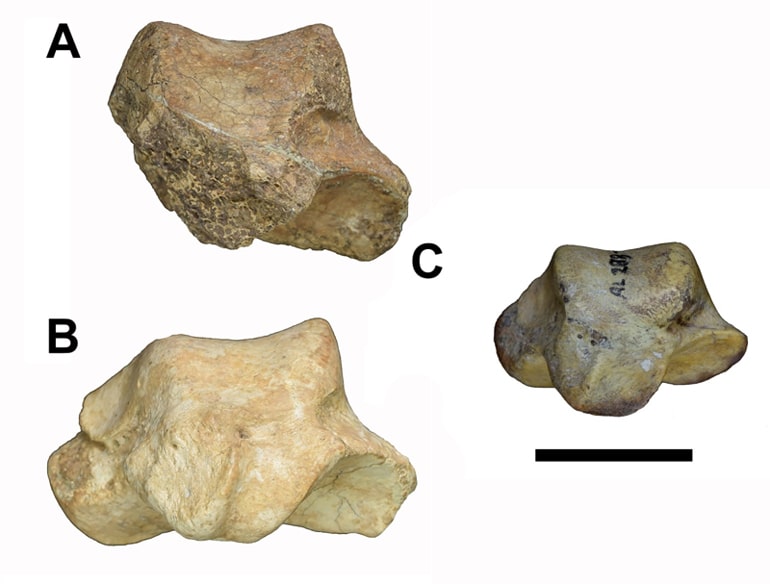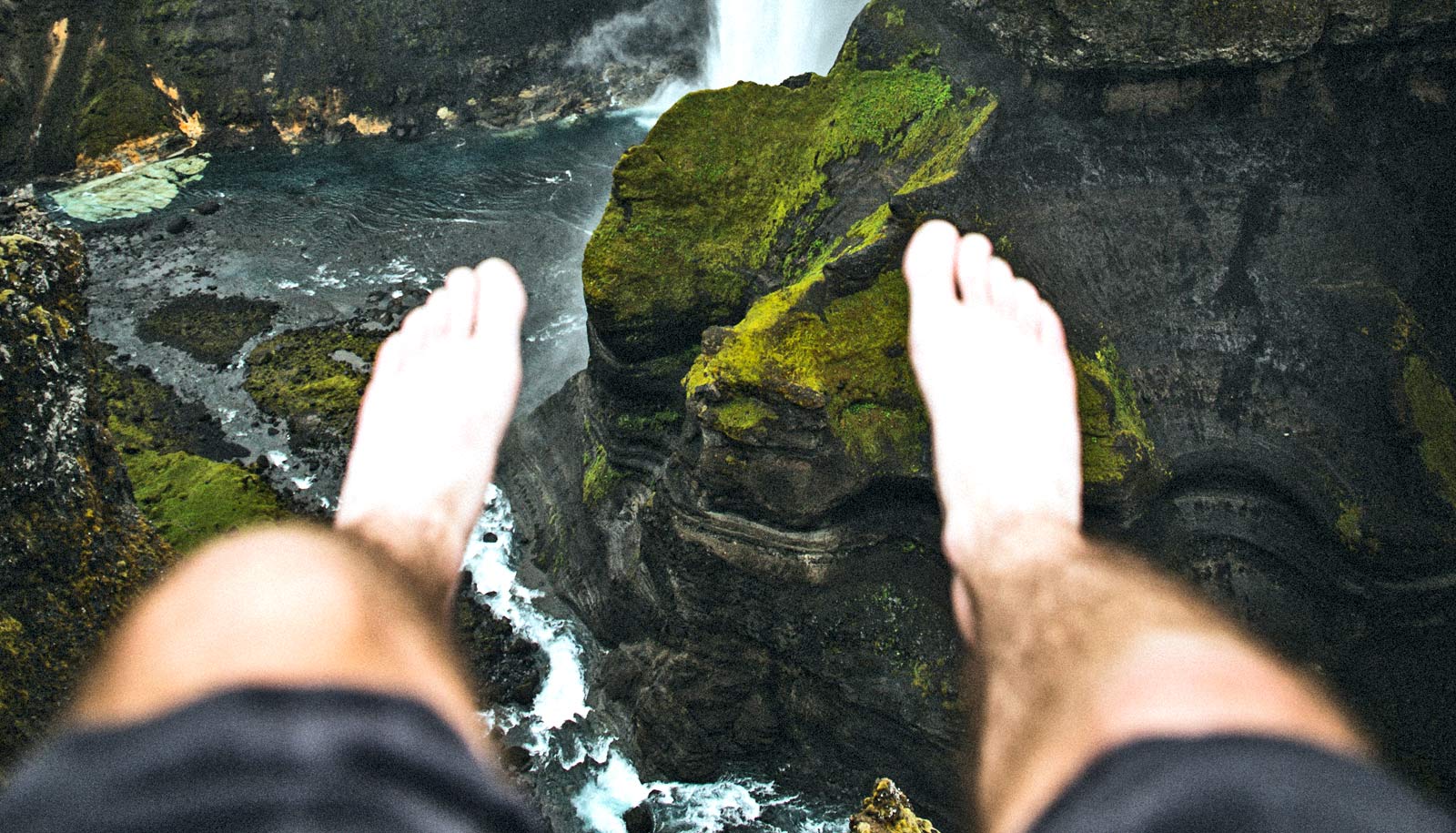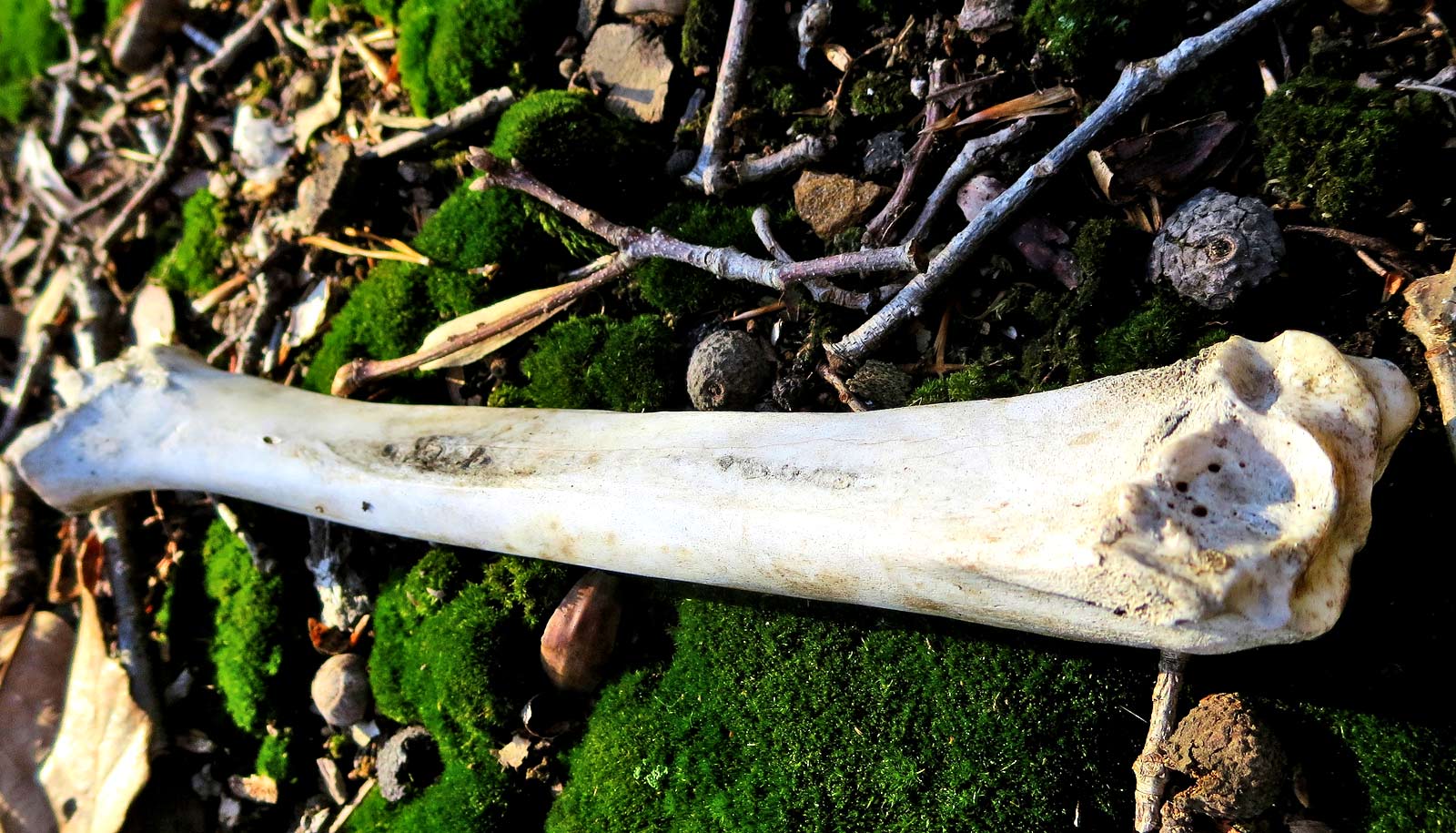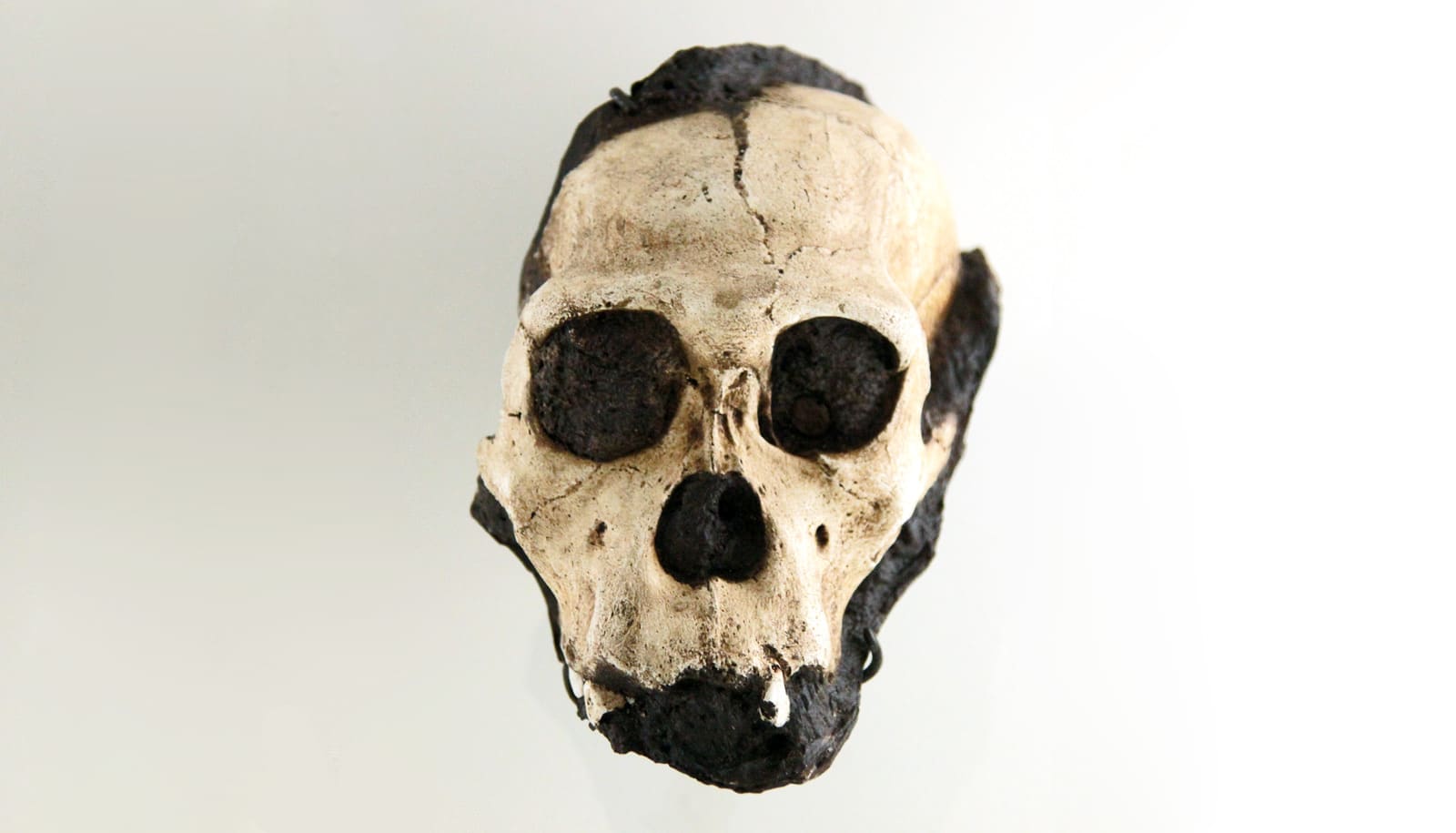New research provides evidence for greater reliance on two-legged walking than the ancient fossil record had indicated before.
Bipedalism is the oldest distinguishing feature between humans and our ape cousins. Among mammals, only humans and our ancestors perform this atypical balancing act.
Researchers analyzed a 4.5 million-year-old fragmentary female skeleton of the human ancestor Ardipithecus ramidus that was discovered in the Gona Project study area in the Afar Regional State of Ethiopia.
The newly analyzed fossils document a greater, but far from perfect, adaptation to bipedalism in the Ar. ramidus ankle and hallux (big toe) than previously recognized.
“Our research shows that while Ardipithecus was a lousy biped, she was somewhat better than we thought before,” says study leader Scott Simpson, anatomy professor at Case Western Reserve University School of Medicine.

Rare fossils
Fossils of this age are rare and represent a poorly known period of human evolution. By documenting more fully the function of the hip, ankle, and foot in Ardipithecus locomotion, Simpson’s analysis helps illuminate current understanding of the timing, context, and anatomical details of ancient upright walking.
University of Michigan geologist Naomi Levin used a combination of sedimentology and isotope geochemistry to help determine the age of the fossils and to reconstruct the environment in which these human ancestors lived. She used field observations of sedimentary rocks to reconstruct the ancient landscape and analyzed the chemistry of the rocks and fossils to determine the vegetation and climate.
“What is exciting about this work is getting a view into early human ancestors at a time when they were developing some key features of what makes us human: walking on two legs and likely spending more time hanging out on the ground instead of the trees,” says Levin, an associate professor in the earth and environmental sciences department and in the Program in the Environment.
“We rely on the geological record to establish the ages of these fossils and the habitats of these human ancestors,” says Levin, who co-directs an isotope geochemistry lab that conducts geological analyses using carbon and oxygen isotopes.
‘A foot in transition’
Previous studies of other Ardipithecus fossils showed that it was capable of terrestrial bipedalism as well as being able to clamber in trees, but lacked the anatomical specializations seen in the Gona fossil that Simpson examined. The new analysis points to a diversity of adaptations during the transition to how modern humans walk today.
“The fact that Ardipithecus could both walk upright, albeit imperfectly, and scurry in trees marks it out as a pivotal transitional figure in our human lineage,” Simpson says.
Key to the adaptation of bipedality are changes in the lower limbs. For example, unlike monkeys and apes, the human big toe is parallel with the other toes, allowing the foot to function as a propulsive lever when walking. While Ardipithecus had an offset grasping big toe useful for climbing in trees, Simpson’s analysis shows that it also used its big toe to help propel it forward, demonstrating a mixed, transitional adaptation to terrestrial bipedalism.
Specifically, Simpson looked at the area of the joints between the arch of the foot and the big toe, enabling him to reconstruct the range of motion of the foot. While joint cartilage no longer remains for the Ardipithecus fossil, the surface of the bone has a characteristic texture that shows that cartilage had once covered it.
“This evidence for cartilage shows that the big toe was used in a more human-like manner to push off,” Simpson says. “It is a foot in transition, one that shows primitive, tree-climbing physical characteristics but one that also features a more human-like use of the foot for upright walking.”
Additionally, when chimpanzees stand, their knees are “outside” the ankle, i.e., they are bow-legged. When humans stand, the knees are directly above the ankle—which Simpson found was also true for the Ardipithecus fossil.
Life in the trees
Ardipithecus ramidus lived near lakes alongside small volcanic centers and next to rivers that coursed through an active rift basin. And while it relied on trees and wooded areas for food, this early ancestor lived where there were open, grassy areas, as well.
“It was an organism equipped to hang out in the trees, like many primates, but it was developing the adaptation to walk on two legs,” Levin says. “So it is significant that it is found in a place where there are a variety of habitats, including those that might not have been dominated by trees.”
The first Ardipithecus ramidus fossils at Gona were discovered in 1999 and appeared in the journal Nature in 2005. Gona has also documented one of the earliest known human fossil ancestors—dated to 6.3 million years ago.
The research appears in the Journal of Human Evolution.
The research was possible through use of the human and ape skeletal collections housed at the Laboratory of Physical Anthropology, Cleveland Museum of Natural History. Major financial support came from the L.S.B. Leakey Foundation, Spain’s Ministerio de Economia, Industria y Competitividad, Marie Curie EU Integration Grant, the US National Science Foundation, Case Western Reserve University, National Geographic Society, and Wenner-Gren Foundation.
Source: Ansley Gogol for Case Western Reserve via University of Michigan



